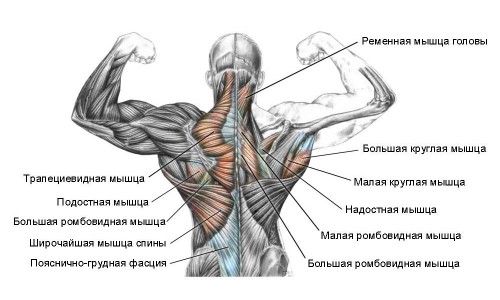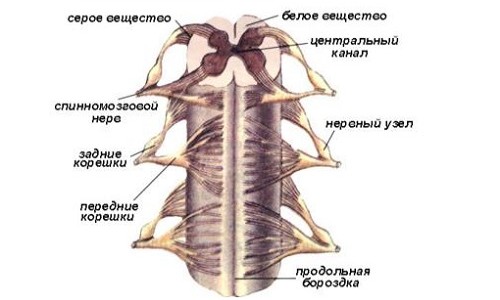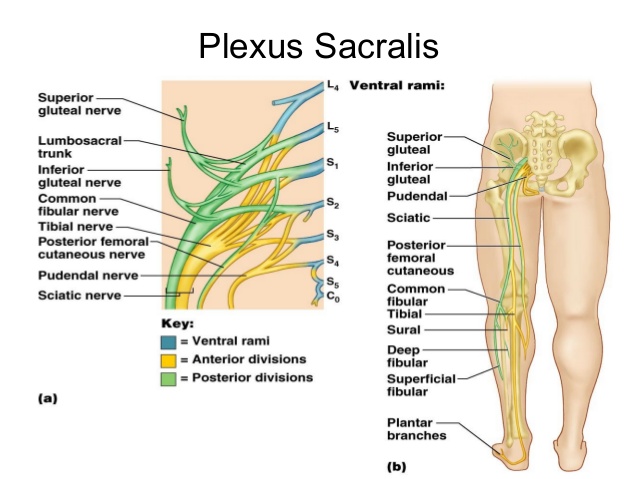How many vertebrae in each division of the human spine?
The Spine is the basis of the skeleton of every person that performs a huge number of different functions. Knowing how many vertebrae a person and where they are located, it is possible to define the problem and to understand what it is linked to certain pain. The vertebrae are connected by cartilage, joints, ligaments, or even have fused. Using a special bending of the vertebrae have the ability to maintain the required balance and greatly reduce the negative impacts of sudden movements.

All of the available area of the spine in humans are characterized by their special structure and are directly from the vertebrae, which form the basis of the skeleton.
the Concept about the spine
Many people wonder, how many vertebrae in the spine and what organs and systems depend on them. There are five areas, each of which, except the tail, different defined curves and is responsible for the activities of various organs and areas of the human body. In particular, there are such departments as:
- neck consisting of 7 vertebrae
- breast, consisting of 12
- lumbar consists of 5
- sacrum, consisting of 3-5;
- coccygeal, consisting of 3-4.
Every single part of the spine is responsible for certain organs, and different kinds of violations can lead to serious health problems in humans and the development of many diseases. It is thanks to the existence of certain curves of the vertebral entire spine is flexible. All the spine people are intended for the qualitative protection of the entire spinal cord.

The Number of vertebrae in the spinal column of man, is unstable and with time may vary, because some parts are fused into one. All in all a healthy person has about 32 to 34 vertebrae, and it is worth considering that the increase or decrease in their number is a symptom of different diseases and various types of deviations. Such anomalies are not fatal, but largely is able to complicate and hamper movement, causing quite severe pain. The main and most frequent causes of various kinds of deviations are disorders of intrauterine development of the fetus and carried out surgery on the spine.
Anatomy and structure of the vertebrae
To understand the issue, how many vertebrae in the human spine, it is necessary to know what departments there are and what they feature. Highlight all five areas of the spine in humans, each responsible for certain organs and systems. The cervical region is the most mobile due to the fact that she has a certain anatomical structure. The unique structure of this area helps in performing the head tilt, because the first two vertebrae are especially flexible. The first vertebra is completely not related to the main post looks like a spine and two arms United by special seals. The second vertebra is presented as a kind of Appendix.

The Thoracic region of the spine resembles the letter C, which curved to the rear.
This Department is directly involved in proper building and development of the chest. To the existing processes of the thoracic vertebrae are attached the ribs special joints, forming a solid chest. This area differs in that it is practically stationary, due to the presence of the minimum space between vertebrae. Very often when problems occur with this part of pain between the shoulder blades.
Lumbar region assumes the greatest number of loads that fall directly on the spine. Therefore, this Department is the most heavily fortified, with the biggest vertebrae. The structure of the lumbar region of the spine is characterized by a smooth small curves that are somewhat similar to the structure of the cervical region. Sacral region is located right at the end of the spine and represents the fused into one bone, the vertebrae. This area of the spine smoothly into the coccygeal division.
Coccygeal region is characterized by the lowest mobility and mostly it is regarded as the preserved bone of the tail, completely unnecessary for modern man. The mobility of the spine as a whole is provided with a huge number of joints that are located between all vertebrae. Knowing the number of vertebrae in humans and its location, it is possible to obtain a complete picture of the emergence of various diseases, because each individual region is solely responsible for the activity of certain internalbodies.
The Number of vertebrae affects all organs and systems of the person, which is why even a slight deviation from the norm can lead to very serious health problems and chronic diseases. You should pay close attention to the condition of the spine, because various kinds of injuries and injuries can lead to serious consequences and violations.
Each vertebra consists of bone tissue, with which the outer side is covered with several condensed matter, consisting of:
- phosphorus
- calcium
- magnesium
- manganese.
It is through these elements creates a good density and correct, and the shape of the spine. The inner area of the spine is the bone marrow, which is responsible for the basic processes that are constantly occurring in the body.
The human Spine is a complex and robust entity that is directly from the bones themselves, and from special fluid, tendons and cartilage. To bones and cartilage of the spine were healthy enough, you should regularly provide them with certain substances that contain useful components, positively affecting the condition of the skeletal system. All the bones of the spine comprise porous fabric that is covered with durable material, which makes bones elastic and desired shape. Inner soft region of the spine is almost completely filled by the bone marrow, as well as a special substance that facilitates the production of red blood cells.
the Relationship with internal organs
Knowing the number of vertebrae, their location and impact on the internal organs, it is possible to determine the root cause of a disease. It is from the spinal cord originate certain nervous fibers responsible for their normal duties and in General for the functioning of the whole organism. Various diseases of the spine are a major cause of problems with the digestive system, the brain and the cardiovascular system.
The Treatment of many diseases does not give the desired effect, because they are mere consequences of a malfunction of the spine. Therefore, the emergence of health problems should pay close attention to the spine, especially at the initial stages of the disease. The number of vertebrae in humans can change with age, because some of them are gradually fused into one. It is important to consider this factor when carrying out surveys at different stages of human life.
Additional sources:
Obovsem A. V., E. V. Ageenkova: “the Structure of the human spine and its functions”.













